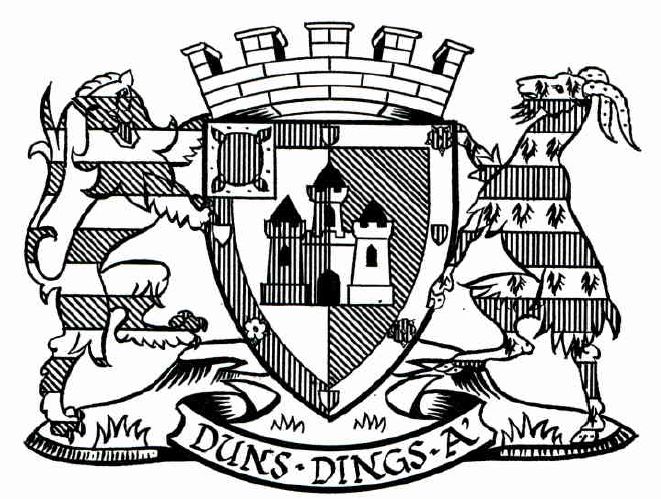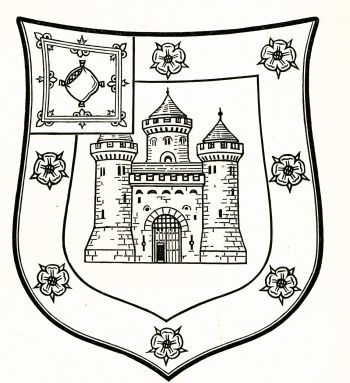Duns: Difference between revisions
Knorrepoes (talk | contribs) No edit summary |
Knorrepoes (talk | contribs) m (Text replace - "|width="15%"|50 px|right |}" to "|width="15%"|50 px|right |}<seo title="Crest, Arms, Coat of Arms, Heraldry />") |
||
| Line 3: | Line 3: | ||
|width="70%" align="center" |'''Heraldry of the World<br>Civic heraldry of the [[United Kingdom]]''' | |width="70%" align="center" |'''Heraldry of the World<br>Civic heraldry of the [[United Kingdom]]''' | ||
|width="15%"|[[File:United Kingdom.jpg|50 px|right]] | |width="15%"|[[File:United Kingdom.jpg|50 px|right]] | ||
|} | |}<seo title="Crest, Arms, Coat of Arms, Heraldry /> | ||
'''DUNS''' | '''DUNS''' | ||
Revision as of 12:09, 7 May 2014
| Heraldry of the World Civic heraldry of the United Kingdom |
DUNS
Duns Burgh
Incorporated into 1976 Berwickshire District Council (1996 Scottish Borders Area Council)
Official blazon
Parted per pale Argent and Vert: a castle triple-towered per pale Gules and of the First, windows port and turret caps Sable, a bordure parted per pale of the Third and First, charged with four roses, barbed and seeded of the Second, alternately with as many escutcheons, all counterchanged; on a canton Or, a cushion of the Third.
Below the Shield, which is ensigned with a Burghal coronet, on a Compartment along with this Motto "Duns Dings A", are set fot Supporters dexter, a lion guardant barry Argent and Vert, sinister, a goatbarry Ermine and Gules, attired and unguled Or.
Origin/meaning
The arms were granted on July 21, 1952.
Duns was created a Burgh of Barony in 1489 and became a Police Burgh in 1842.
The castle is Duns Castle, shown in the colours of two important families in the area, the Hay and Dunbar families. These are also represented in the bordure, with the roses of Dunbar and the escutcheons of Hay. The canton with the red cushion is taken from the arms of Randolph, Earl of Moray, to whom the lands of Duns were given in 1314. The motto "Duns Dings a" is from when an English raiding army was frightened off by the locals who had made big rattles from cow hides filled with stones. These they shook to make a loud noise or "ding" and the English army horses bolted! The "a'" bit means all!
The arms were based on the seal of 1892, which already showed the castle, bordure and free canton. The bordure now only showed the roses of the Dunbar family. As a crest an arm with a sword and as motto 'Invictus' were used. These both refer again to the above mentioned raiding party.
| The seal from 1892 |
The arms on the seal from 1892 |
Duns Community Council
Official blazon
Parted per pale Argent and Vert, a castle triple-towered per pale Gules and of the First, windows, port and turret caps Sable, a bordure parted per pale of the Third and First charged with four roses, barbed and seeded of the Second, alternately with as many escutcheons all counterchanged, on a canton Or, a cushion of the Third.
Above the Shield is placed a Coronet appropriate to a statutory Community Council, uidelicet:- a circlet richly chased from which are issuant four thistle leaves (one and two halves visible) and four pine cones (two visible) Or, and in an Escrol below the same this Motto "Duns Dings A".
Origin/meaning
The arms were granted on April 25, 1978.
The arms are based on the arms of the former Duns Burgh (see above), but without the supporters and crown.
Literature : Porteous, 1906; Bute et al; 1903; Urquhart, 1974, 2001



